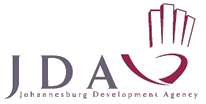The massive infrastructure build for the Phase 1C extension of the Rea Vaya bus rapid transit (BRT) network is set to step up a gear in 2016, with construction teams already hard at work along the new 16km trunk route between the CBD, Alexandra and Sandton. Elias Nkabinde reports.
Along Katherine Street in Sandton, contractors have hit the ground running in the New Year, with bridge construction well under way at three different sites:
- Near Grayston Drive, where the foundations of a brand new cable-stay pedestrian-cycling bridge over the M1 highway are being laid;
- Roughly 1.5 kilometres north of Grayston Drive off Katherine Street, where the foundations of a brand new cable-stay BRT-pedestrian bridge over the M1 are being laid; and
- Roughly 700 metres before the BRT bridge site on Katherine Street – between the intersections with Westbrooke Drive and Harris Street – where a new bridge is being built to replace the old bridge over the Sandspruit River.
According to Siyabonga Genu, senior development manager at the Johannesburg Development Agency (JDA), which is spearheading the Phase 1C BRT build, construction of the new Sandpruit Bridge began in November 2014. The multi-million rand project has just entered its second phase, with projected completion in September 2016.
SANDSPRUIT BRIDGE PHASE TWO UNDER WAY
Resident Engineer Trevor Nxumalo, speaking during an on-site interview on 13 January, explained that phase one “involved the completion of the western section of the new bridge, the diversion of traffic onto the new section and the demolition of the old bridge, which took place in November last year.
“For phase two, we are now building the next two-thirds of the bridge and have started laying a new concrete foundation base that will underpin the eastern section of the bridge.”
The new bridge will be both higher and considerably wider than the old bridge, and therefore better protected when the Sandspruit River is in flood.
The old, two lane-bridge was unsuited to the volumes of traffic that traverse the Katherine Street stretch between Grayston and Marlboro Drives daily. The new, six-lane bridge will bring an end to traffic bottlenecks at this point, while opening the way for the BRT route that the JDA is laying down along Katherine Street.
Over the last two weeks, besides ongoing work on the bridge’s foundations, the contractor has been conducting roadworks along Katherine Street from Westbrooke Drive through to the BRT bridge construction site – as well as beyond this, through to the intersection of Katherine with Marlboro Drive, and eastwards on Marlboro Drive until the M1 north onramp.
MORE THAN JUST BRT INFRASTRUCTURE
A widened Katherine Street, a realigned intersection with Harris Street eastbound, and the establishment of three right-turning lanes into Marlboro Drive coupled with an added lane on Marlboro Drive, will ease the flow of traffic for north- and eastbound commuters heading home after a day’s work in Sandton and surrounding suburbs.
All of this will be accompanied by upgraded, sidewalks, kerbsides, traffic signals, street lighting and signage, and in some cases underground services.
And the phase 1C expansion as a whole will include the establishment of high-quality cycling and pedestrian routes and the integration of Rea Vaya with other modes of public transport. This will include:
- A new state-of-the-art public transport interchange in Alexandra;
- A five-kilometre dedicated walking-cycling pathway to accommodate the more than 10 000 people who walk between Alexandra and the Sandton CBD daily; and
- A new transport system in the Sandton CBD that incorporates the Gautrain station, pedestrians and cyclists.
The bulk of this is scheduled to be complete by April 2017, after which BRT services between Sandton, Alexandra and the CBD will begin, followed by the introduction of feeder routes to extend the network to Rosebank, Randburg, Greenstone, Ivory Park, Rabie Ridge and Midrand.
TRANSPORT BACKBONE FOR A NEW CORRIDOR OF FREEDOM
This massive infrastructure outlay is aimed not merely at easing the flow of traffic, but at establishing the transport backbone for a whole new Corridor of Freedom along this strategic route through the north-eastern quadrant of the city.
A crucial part of the Joburg 2040 Growth and Development Strategy, the City’s Corridors of Freedom programme seeks to undo the legacy of apartheid town planning, which saw the majority of Joburg residents shunted to the city’s outskirts, far from access to services, jobs, training and growth opportunities.
It aims to do this by laying down well-planned transport arteries – the Corridors of Freedom – linking mixed-use development nodes which are characterised by high-density accommodation supported by office buildings, retail development, and opportunities for leisure and recreation.
The aim is to “re-stitch” the city to create a new future in which residents live closer to their places of work, study and leisure, with fast, safe and affordable public transport giving people easier access to essential amenities while reducing reliance on private vehicles.
In his latest State of the City address, on 6 May 2015, Mayor Tau said the Corridors programme was the City’s “next area of acceleration”, noting that the planning and budgeting frameworks for the first three Corridors had been finalised and approved.
And Finance MMC Geoffrey Makhubo, in his 2015/16 Budget speech on 26 May, set aside a large part of the City’s three-year capital budget for implementing the programme – in particular, for continuing the roll-out of the transport and other infrastructure that forms the backbone of the Corridors.

